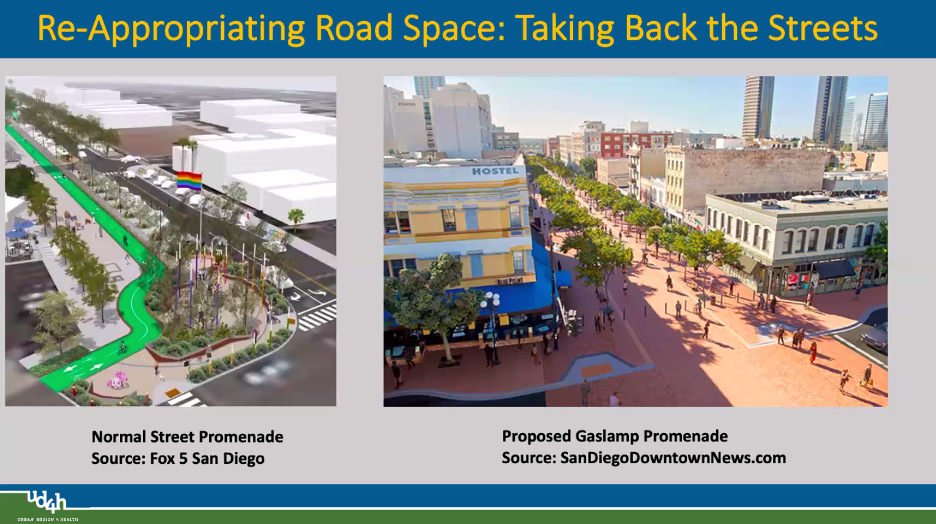It sounds simple – and for some cities, it’s happening now.

It’s an obvious but difficult truth in transportation design: Cars and humans don’t share the same needs. In fact, when we design cities for cars, we’re actively making them more hostile for the planet, as well as for people who walk, roll, and otherwise need to get around without driving. This hostility leads to negative outcomes in the areas of climate and public health. Unfortunately, in the last fifty years, urban designers have largely prioritized the needs of cars — think wide roads and endless parking lots — over the needs of people. Our towns and cities have changed to reflect a car-centered approach that is costing us our health and wellness. But in some forward-thinking regions of the United States, transportation planners and elected officials are using health, not highway usage, to measure success.
For Urban Design 4 Health, an international consulting group which, success is measured in health outcomes, not shortened commute times. UD4H “specializes in measuring the place-based relationships between land development, transportation, and activity and travel behavior patterns,” according to their mission statement. Its founder, Dr. Larry Frank, has been doing the work for decades. He joined America Walks for a December 2022 webinar to talk about the possibilities when cities focus on people and places, not parking.
Watch the Full Webinar Here:
Using health outcomes — like diabetes rates, incidences of respiratory disease, and heart disease — as the key metrics, rather than traditional, car-centered benchmarks, officials in Nevada, New York, and California have helped their citizens get healthy and reconnect with their communities. As Dr. Frank demonstrated, changing streets to make them more walkable also creates spaces for people to gather and cuts down on the kinds of activities that lead to increased carbon output.
“Health and climate change are two sides of the same coin when it comes to the built environment,” said Dr. Frank. Additional street trees, more watershed-friendly building materials, denser housing, and fewer large parking lots can help cut through urban heat bubbles while encouraging people to walk and bike more.
Taking Back the Streets

Also joining the webinar were Alex Kone of The Genesee Transportation Council in Rochester NY, Deb Reardon of the Regional Transportation Commission in Southern Nevada, and Kim Anderson from the San Joaquin Council of Governments in California. Together, they have analyzed the intersections of health, transportation, and land use plans across their regions.
Do these kinds of interventions really work anywhere in America? Absolutely, says Reardon, who spoke about the specific challenges in Southern Nevada.
“A lot of what we’re dealing with is suburban-style development, with lower densities and auto-oriented street networks,” she stated, explaining that “these conditions…mean a lot of our residents and visitors are driving.”
If a place like Southern Nevada can undertake the kind of radical street redesign required to center walking, biking, rolling, taking transit, and other non-car forms of transportation, just about anywhere else can, as well. They just need is the political will to use the health of the community and the planet, rather than the desire to drive and park, to make it happen.
As always, you can watch all of America Walks’ webinars on our YouTube channel. Find them all here.